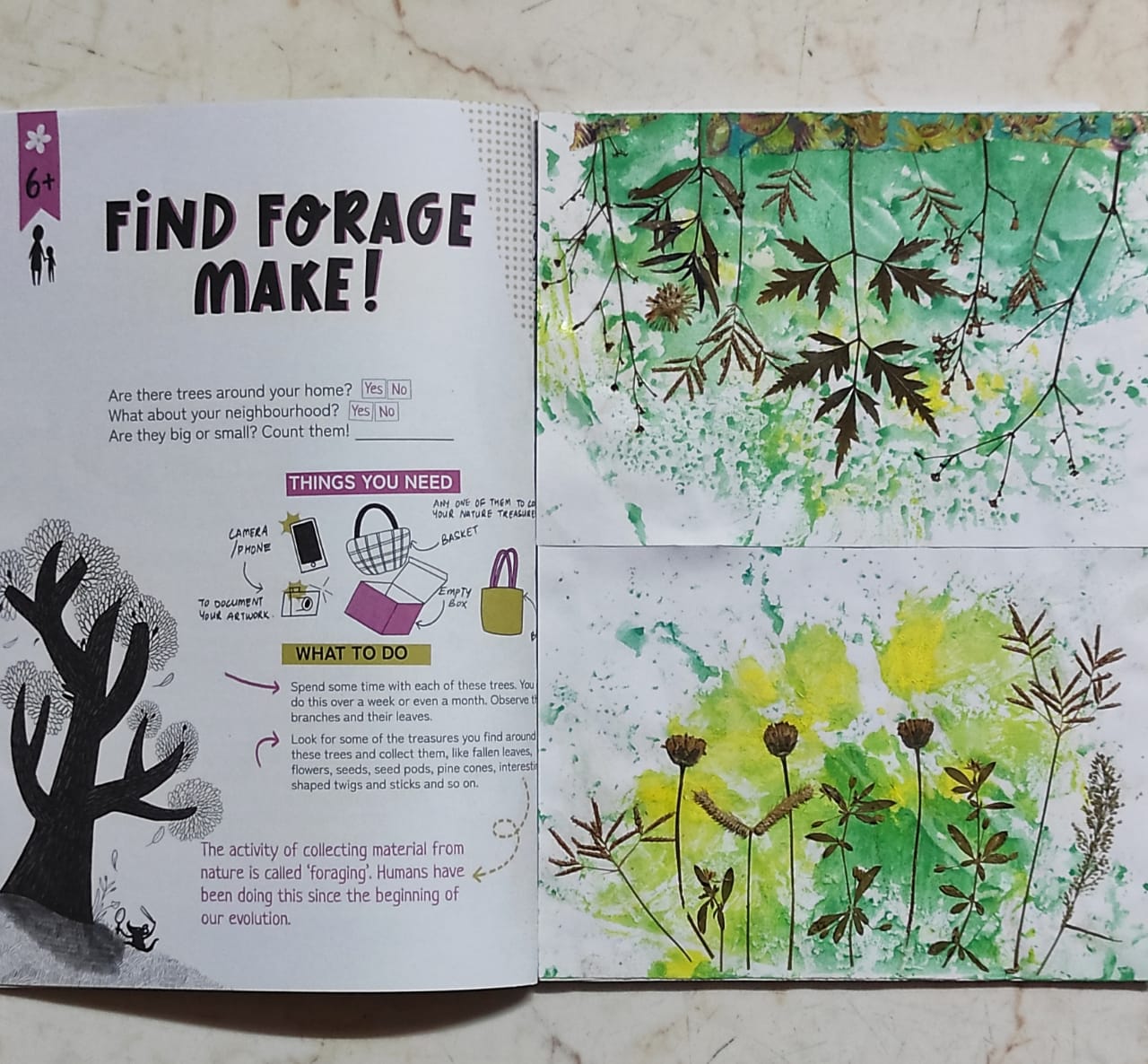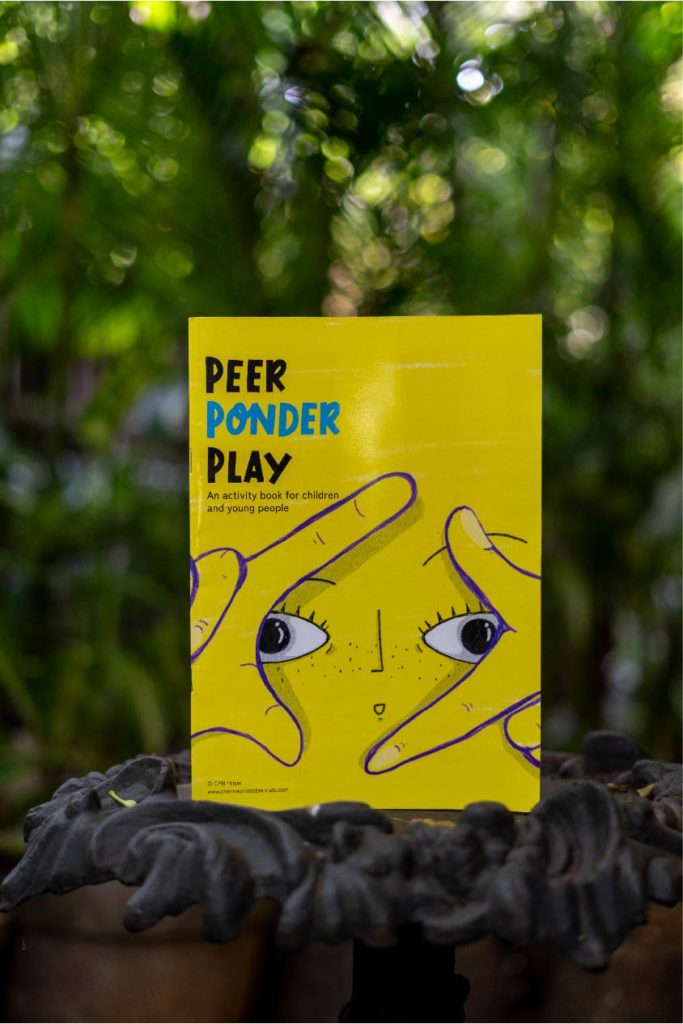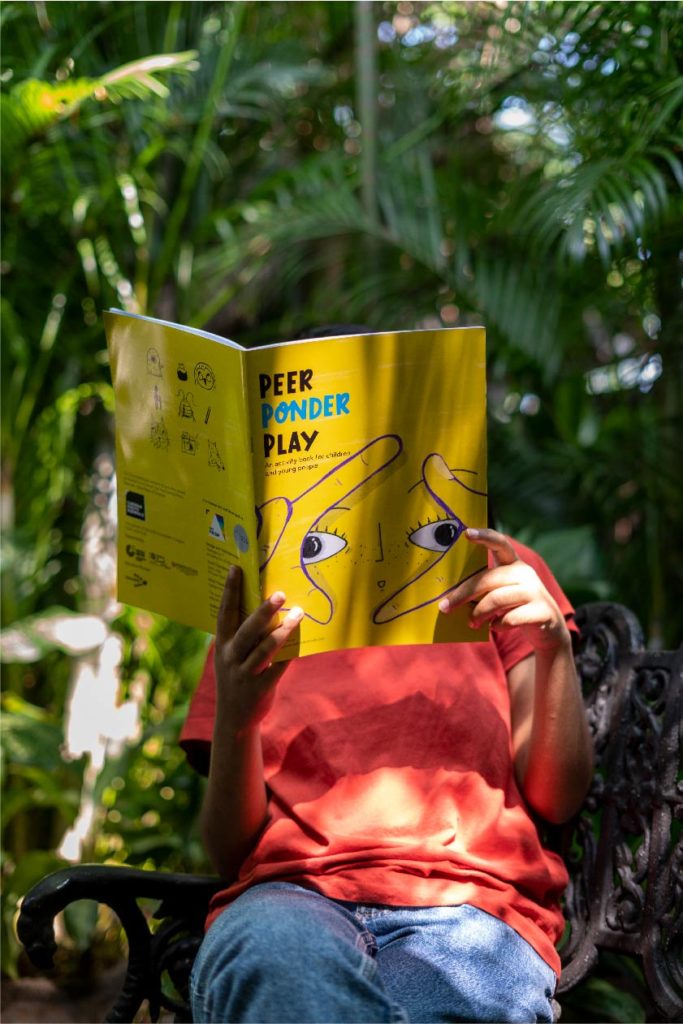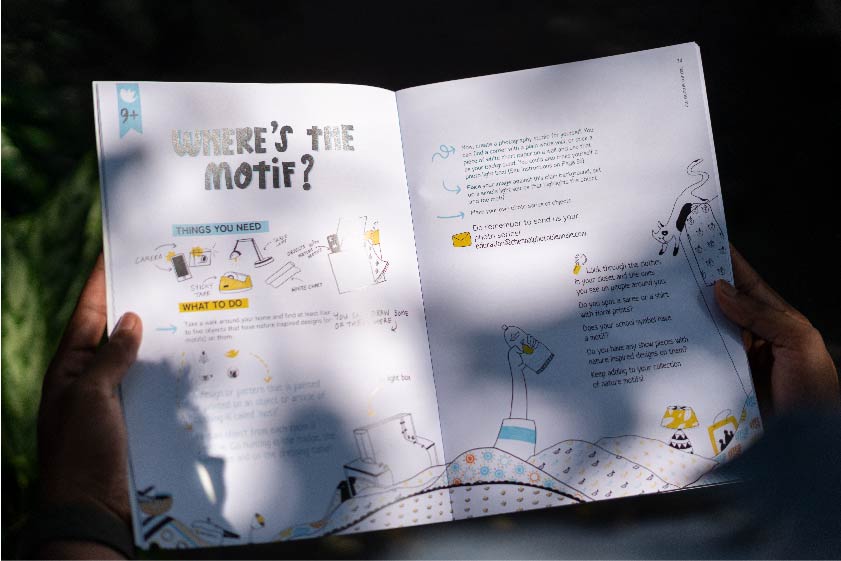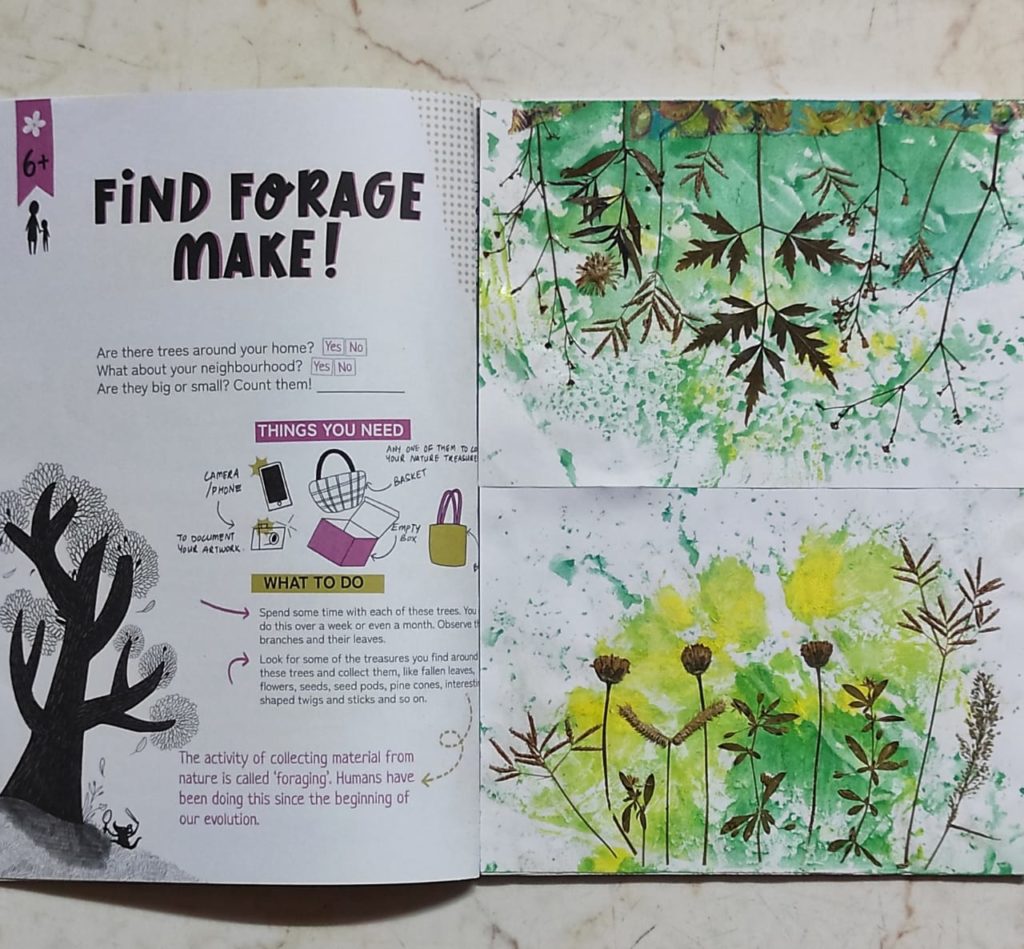Brilliantly illustrated, [the book] is an absolute page-turner, and it feels tempting to make your way through the entire book at once, rushing past the activities, but I’d suggest you savour it. Every page is carefully designed in order to pique a young artist’s interest and give them a sense of wonder when they look at nature.
Peer Ponder Play, a fun-looking activity book with a lime-yellow cover caught my eye, not because it’s any activity book for children, but because it’s a book encouraging creative artistic expression in kids through a set of simple activities. Conceptualized and developed by Chennai Photo Biennale in collaboration with Sphere Arts Education, it conveys the concept behind ‘Maps of Disquiet’ in a way that children can understand. The activities included in the book encourage kids to explore the world as they know it from different perspectives.
The artworks curated for the third edition of CPB revolve around the theme ‘Maps of Disquiet’, which highlights and explores our constantly evolving ecological spheres while raising important questions about the future we are gravitating towards. Since the theme itself is vast, deep and thought-provoking, CPB has collaborated with Sphere Arts Education in an endeavor to make the work accessible to children without overwhelming them with ideas that may be hard for them to grasp.
Our environment is the greatest source of inspiration for art, but often, nature is taken for granted. Through tasks and suggestions centered on subdued aspects of nature that invite curious children to explore, this activity book attempts to change that. Children have the chance to pay closer attention to surroundings they might already feel familiar with, and discover brand new ways to think about the world and express it in their art.
To ensure that every ambitious kid has someone apt to look up to, the book features a variety of photographers and their work in between pages of activities, along with a small biographical note on the artist. I was surprised to discover several photographers I hadn’t come across before, and it was interesting to note the way they had captured and portrayed certain concepts. The work of Rohini Devasher, an artist and amateur astronomer, for example, is shown on one page before reeling in the children to an activity involving stars and constellations.
Marked with helpful color-coded tags, the book has age-graded activities so as to tailor to the fancies of each age group, although there’s much ambiguity. There are no rules when it comes to expressing yourself creatively, and that’s exactly what this book aims to convey.
One lovely addition in the book is the use of unique words within activity titles, with helpful dotted lines leading to a crisp, short explanation of what the word means. (For eg., ‘Muse’: The source of an artist’s inspiration.) There are also tiny Did you know? spaces that make the children ponder upon the questions and concepts raised in the activity.
Brilliantly illustrated, the book is an absolute page-turner, and it feels tempting to make your way through the entire book at once, rushing past the activities, but I’d suggest you savor it. Every page is carefully designed in order to pique a young artist’s interest and give them a sense of wonder when they look at nature.
Peer Ponder Play is enriched with content that is sure to push inquisitive young people to try to capture the world around them in a way they hadn’t considered before.
‘Find Forage Make!’ an activity from the book about foraging for fallen leaves, flowers, seeds and twigs, and arranging them or making imaginary patterns with them:
About the author
Anagha is a 19-year-old photographer & writer. She’s currently pursuing Sociology. Interested in arts and a lot of reading, she finds joy in expressing herself creatively and exploring Chennai through photography.
